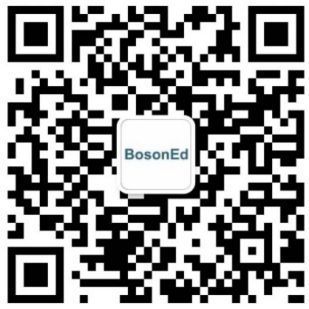Transfer Application: Three Case Studies
Transfer Case One: Switched Major
Transferring from: UIUC
Accepted by: Cornell, University of Michigan Ann Arbor, New York University, Emory, UNC Chapel Hill, University of Virginia
Major: Mathematics
Applying for Computer/Information Science
High School GPA: 4.0, College GPA: 4.0, SAT: 1480, TOEFL: 109
Activities: UIUC CS Course Assistant • Google internship • Speedcubing competition
Case Analysis
The student joined BosonEd in the summer before he started college. Therefore, we were able to plan two activities for him. Transfer activities should reflect the student's academic and career plans, and ideally, also show interactions with the university. The goal is for the target schools to see that the student is doing well at the current school, leaving the school is not because of difficulties but with a clear plan. This student's activity plan has a challenge because he is transferring across majors, especially to the highly competitive field of computer science. Therefore, enhancing the computer-related background is crucial. Being a CS course assistant at UIUC and having a Google internship both demonstrate a capabilities in computer science. Being a course assistant also shows the student's care and dedication to the university community.
School Selection
We've discussed in the previous article that choosing the right schools is crucial. When selecting schools for this student, we first needed to meet the requirements for prerequisite courses, planning the courses for the new semester before the start of the first year. Secondly, we contacted each school to ensure that transfer quotas for that year were reasonable to apply.
Essay
Transfer essays should first address the concerns of the target school. All admission officers, upon receiving transfer applications, will ask two questions: 1) Why do you want to transfer? 2) Why do you want to transfer to my school? Most students, when writing the "why transfer" essay, concentrate 70% of the content on why they want to transfer, neglecting "why transfer to particular school." For admission officers, what matters most is why the student chose their specific school. "How is my school different from your current one? What does your current school lack that ours can offer? How do you plan your academic life at the target school, and what can you bring to this school?" and so on.
Application Theme
A smart STEM guy with a sense of justice. Highlighting a story of catching cheating in a Rubik's Cube competition. Reason: Activities related to the major have already proven the student's learning ability and academic qualities. The trap that CS applications easily fall into is the lack of individuality and a homogeneous background. This theme vividly portrays his personality, showing that he is just, responsible, and intelligent. Combined with the relevant professional display in the "why transfer" essay, the combination gives his image warmth and depth.
Transfer Case 2: To Liberal Arts College
Transferring from: UCSD
Accepted by: Hamilton College, Wesleyan University
Major: Politics/International Relations
High School GPA: 4.16, College GPA: 3.85 (with a C), SAT: 1360
Activities: • A a pre-college internship in journalism • High school tennis team captain, won Northern California championship • School magazine editor • Author, multiple essays included in essay collections • Volunteer for international organization
Analysis
The student had a preference for the Liberal Arts colleges when applying as a freshman but was admitted only to UCSD. In the first semester at UCSD, the student contacted me to prepare for transfer. She had only one semester of courses and received a C. A decline in GPA in the first year of college is not unusual. The average grade for this particular course was actually a C-. We wrote a supplementary material explaining the situation. Grades must be analyzed in context to make sense.
Application strategy
1) Precise positioning of the application theme, 2) Strengthening strengths and compensating for weaknesses. Her standardized test scores were not a strength. Instead, her strengths are various activities and the student's personality. Activities included published works, tennis, and volunteer experience in the international organization. The student was very articulate. Therefore, we first precisely positioned the application theme to reflect the student's preferences for 1) liberal arts education, 2) an international perspective, and 3) an outgoing personality – all preferences of liberal arts colleges. For transferring, determining the application theme must align closely with the school's preferences.
The student was an editor for her high school magazine and published decent number of articles in both her high school magazine and publications outside of the school. So we submitted a portfolio of the her writing.
The student interviewed at each school. The student was articulate, making interviews an added advantage. Second, liberal arts colleges pay attention to the personal characteristics, and interviews provide an excellent platform to showcase personality.
School selection
School selection for liberal arts college transfers is particularly important because admission numbers are limited; Hamilton College, for example, admitted only one student for the spring enrollment of that year, and it happened to be this student.
Transfer Case 3: Transfer to a Ivy League
Transferring from: Wake Forest University
Accepted by: Columbia University, Emory University, Georgetown University, New York University
Major: Economics
College GPA: 4.0, SAT: 1490
Activities:
• Four research projects during college, including Research Fellowship and Research Assistant roles
• Proficiency in painting
Case Analysis
In terms of school selection, we applied to several Ivy League schools and several within top 30. Considering these goals, the student's strengths do not lie in cores. For Ivy League schools, a 1490 SAT and a 4.0 GPA are fairly standard. The student's advantages lie in her research experience, personal background (went to high school in Europe. We ensured that these aspects were prominently featured in the application theme and essays.
School Selection
These top-tier schools place significant emphasis on demonstrating interest. Why Columbia and not Penn? How well do you understand the school? (In terms of course offerings, unique features, campus culture, and atmosphere). We made sure that the student's essays reflected this understanding. For example, Columbia seeks students proficient in their major who are also willing to take Core courses, and we ensured that this was mentioned in the essay.
Portfolios and supplementary materials are effective ways to gain extra points. The student submitted research abstracts as supplementary materials, and her painting works.
Summary: How to Prepare for Transferring to Top 30 Universities
Maintain a High GPA
It's crucial to have a GPA of 3.5 or above.
Complete Prerequisite Courses
Ensure that you meet the requirements for general education courses and have a minimum number of credits in natural and social sciences. Since each school has different requirements for prerequisite courses, early and accurate school selection is crucial to avoid realizing too late that you haven't met the requirements of your target school.
Highlight Your Application Theme
Having a standout application theme is important. Admissions officers have limited time to review your application materials, and materials without a theme are forgettable, especially in fields with significant homogeneity, such as computer science, where many students transition from math or engineering backgrounds, having a distinct application theme is essential to differentiate yourself from others.
Precise School Selection
Consider factors such as admission rates, transfer admissions policies, and different prerequisite course requirements when choosing the right schools. Accurate school selection enhances your chances of successful transfer.
Excellent Essays
Craft compelling essays that tell a captivating story and emphasize your application theme. Well-written essays are key to showcasing your personality and motivation.
Demonstrate Achievements in College
Showing improvement and accomplishments in college compared to high school can enhance your competitiveness.

















